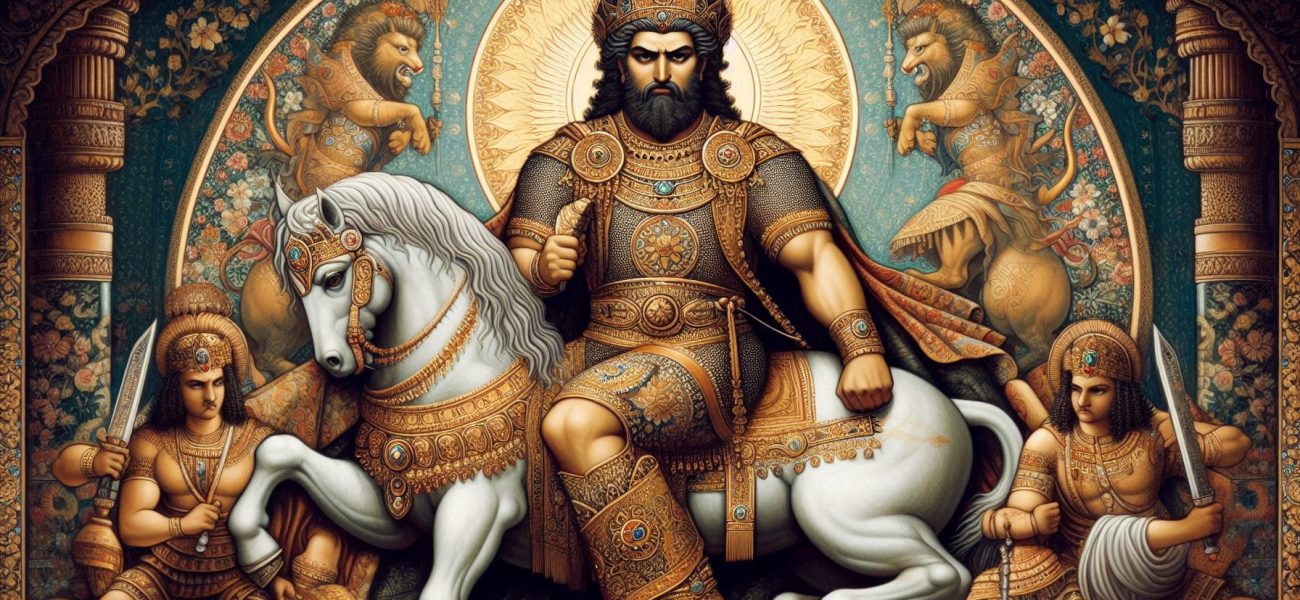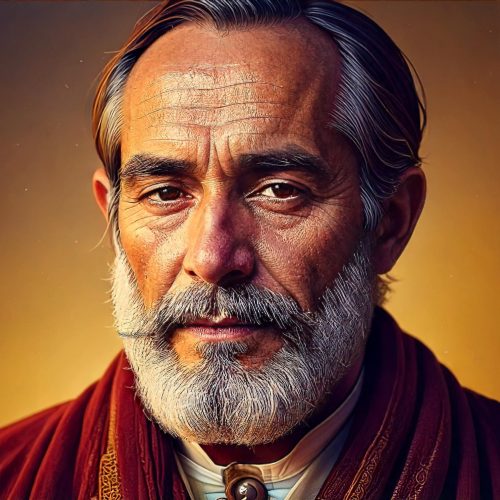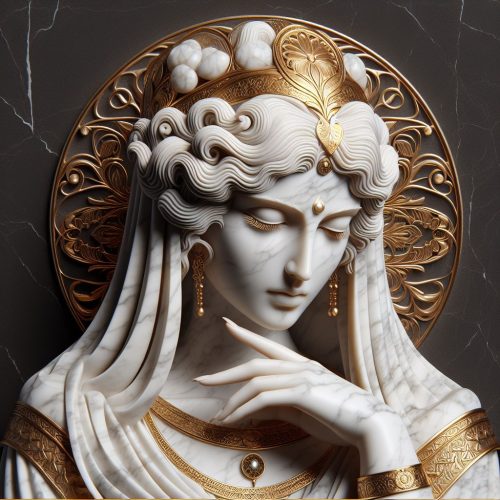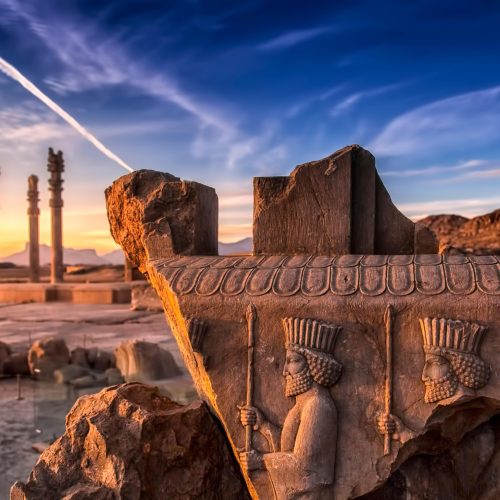By Dr. Farhad Khosravi, Professor of Ancient Iranian History at the University of Tehran
In the annals of Persian history, there exists a figure whose name, though oft-overlooked by the casual observer, resonates with profound significance for those who have dedicated their lives to the study of our illustrious past. This personage, none other than Darayan I, stands as the progenitor of a lineage that would, in time, give rise to the mighty Sassanian Empire. It is with great reverence and scholarly enthusiasm that we embark upon an exploration of this remarkable sovereign, whose reign marked the nascence of an independent Persis, laying the foundation for a dynasty that would endure for generations.
The Twilight of the Seleucids and the Dawn of Parthian Ascendancy
To comprehend fully the circumstances that precipitated Darayan I’s investiture as the inaugural king of Persis, one must first cast one’s gaze upon the broader tapestry of power that clothed the Iranian plateau in the latter half of the second century before the Common Era. The once-formidable Seleucid Empire, that great Hellenistic realm which had held sway over vast swathes of Alexander’s former dominions, found itself in a state of inexorable decline. Its grip upon the eastern provinces, always tenuous at best, had weakened to the point of dissolution.
Into this power vacuum strode the Parthians, a people of nomadic origin who had, through a combination of martial prowess and political acumen, established themselves as the preeminent force in the region. Under the leadership of their astute monarch, Mithridates I (r. 171–132 BC), the Parthians had expanded their influence southward and westward, subsuming territories that had hitherto been under Seleucid suzerainty.
It was in this context of shifting allegiances and realigned power structures that Phraates II (r. 132–127 BC), the son and successor of Mithridates I, ascended to the Parthian throne. Inheriting a realm that was still in the process of consolidation, Phraates II recognized the necessity of securing the loyalty of local potentates who could serve as bulwarks against potential Seleucid resurgence.
The Emergence of Darayan I
Among these local rulers, none would prove more consequential to the future course of Iranian history than Darayan I. Though the precise details of his early life and ascension remain shrouded in the mists of antiquity, it is generally accepted by scholars of the period that Darayan was a scion of the native Persian aristocracy, a class that had maintained its distinct identity and traditions despite centuries of foreign rule.
The investiture of Darayan I as king of Persis, most likely occurring sometime after 132 BC, represented a masterstroke of Parthian statecraft. By elevating a local nobleman to royal status, Phraates II not only secured a loyal vassal in a strategically vital region but also tapped into the deep wellspring of Persian cultural memory. The people of Persis, who had never fully reconciled themselves to the loss of their imperial legacy following Alexander’s conquests, now found themselves once more under the rule of one of their own.
The Nature of Darayan’s Kingship
It behooves us, at this juncture, to examine more closely the nature of the kingship bestowed upon Darayan I. While he bore the title of king (rendered in Middle Persian as “shah”), it is crucial to understand that his authority was circumscribed by the overarching suzerainty of the Parthian monarch. This arrangement, which might be termed a form of vassalage, was not uncommon in the ancient Near East and allowed for a degree of local autonomy while preserving the integrity of the larger imperial structure.
The exact parameters of Darayan’s authority remain a subject of scholarly debate. Some posit that his remit extended primarily to matters of internal governance and the collection of tribute, while others argue for a more expansive role that included limited military responsibilities. What is clear, however, is that Darayan I was expected to acknowledge the supremacy of his Parthian overlord and to render both material and martial support when called upon to do so.
The Cultural Significance of Darayan’s Reign
Perhaps the most enduring legacy of Darayan I’s reign lies not in any specific political or military achievements, but in its profound cultural significance. For the people of Persis, long accustomed to rule by foreign dynasties, the installation of a native king represented a renaissance of sorts—a rekindling of the flame of Persian identity that had smoldered, but never been extinguished, under Seleucid dominion.
This cultural revitalization manifested itself in various ways. There was, for instance, a renewed interest in Achaemenid artistic motifs and architectural styles, as evidenced by the rock reliefs and numismatic evidence that have survived from this period. The use of the Aramaic script for writing Middle Persian (a practice that would evolve into the Pahlavi script of the Sassanian era) also gained momentum during this time, reflecting a desire to articulate Persian concepts in a distinctly Persian manner.
Moreover, it was under Darayan I and his immediate successors that we see the first stirrings of what would later become the state religion of the Sassanian Empire: Zoroastrianism in its distinctly Persian form. While it would be anachronistic to speak of a fully developed state cult at this early stage, there is evidence to suggest that the kings of Persis positioned themselves as protectors and patrons of the Zoroastrian priesthood, laying the groundwork for the symbiotic relationship between throne and altar that would characterize later Persian polities.
The Geopolitical Context of Darayan’s Reign
To fully appreciate the challenges and opportunities that confronted Darayan I during his reign, it is necessary to consider the broader geopolitical landscape of the time. To the west lay the remnants of the Seleucid Empire, still a force to be reckoned with despite its diminished circumstances. To the east, the Greco-Bactrian Kingdom held sway, a curious hybrid of Hellenistic and Central Asian cultures that would soon face its own existential crisis with the incursions of nomadic peoples from the steppes.
Within this complex web of competing interests and shifting alliances, Darayan I was tasked with navigating a course that would preserve the autonomy of Persis while fulfilling his obligations to his Parthian suzerain. It was a delicate balancing act, one that required both diplomatic finesse and a keen understanding of realpolitik.
Evidence suggests that Darayan I acquitted himself admirably in this regard. By maintaining cordial relations with the Parthian court while simultaneously burnishing his credentials as a champion of Persian cultural revival, he succeeded in carving out a unique political niche for Persis. This policy of measured independence within the framework of Parthian overlordship would be continued by his successors, allowing the kingdom of Persis to flourish as a distinct entity for generations to come.
The Legacy of Darayan I
As we cast our gaze forward through the corridors of time, we can discern the long shadow cast by Darayan I’s reign. The dynasty he founded would rule Persis for nearly four centuries, gradually accruing power and influence until, in the person of Ardashir I, it would overthrow the Parthians and establish the Sassanian Empire in 224 CE.
But Darayan’s legacy extends far beyond mere dynastic continuity. In many ways, he can be seen as the progenitor of a distinctly Persian mode of kingship that would reach its apotheosis under the Sassanians. The concept of the king as both political ruler and religious patron, the emphasis on Persian cultural traditions, and the careful balancing of local autonomy with imperial loyalty—all these elements can be traced back to the precedents established during Darayan’s reign.
Furthermore, the very existence of an independent Persis under native rule served as a wellspring of inspiration for future generations. It kept alive the memory of Persian greatness during the long centuries of Parthian dominion, providing a conceptual bridge between the glories of the Achaemenid past and the imperial ambitions of the Sassanian future.
Challenges in Studying Darayan I
It would be remiss of this scholar not to acknowledge the significant challenges that confront any serious study of Darayan I and his era. The paucity of contemporary written sources is a perennial obstacle, compelling us to rely heavily on numismatic evidence, archaeological findings, and later historical traditions. This dearth of primary textual material has led to spirited debates among historians regarding even the most basic facts of Darayan’s reign, including its precise chronology and the extent of his territorial holdings.
Moreover, the tendency of later Sassanian historiography to view the kings of Persis through the lens of their own imperial ideology further complicates our task. We must always be wary of retroactive attributions and anachronistic interpretations that seek to cast Darayan I and his successors as proto-Sassanians, imbued with an historic mission to restore Persian hegemony over the Iranian plateau and beyond.
Despite these challenges, the diligent researcher can, through careful analysis and judicious use of comparative methods, construct a reasonably coherent picture of Darayan I and his times. It is a picture that, while necessarily incomplete, nonetheless offers tantalizing glimpses into a crucial period of transition in Iranian history.
As we draw this exposition to a close, it behooves us to reflect once more upon the singular importance of Darayan I in the grand tapestry of Persian history. Though he ruled over a relatively small kingdom, and though his reign is separated from our own time by more than two millennia, the reverberations of his accomplishments continue to be felt.
In Darayan I, we see embodied the resilience of Persian culture, its capacity to adapt to changing political realities while maintaining its essential character. We see, too, the seeds of future greatness, planted in the fertile soil of Persis and nurtured by generations of rulers who traced their lineage back to this seminal figure.
As scholars and as Iranians, it is incumbent upon us to continue our investigations into this formative period of our national history. For in understanding Darayan I and the world he inhabited, we gain not only insight into our past but also inspiration for our future. The flame that was kindled in Persis more than two thousand years ago burns still, illuminating our path forward as a nation and as a people.
In nomine Ahura Mazda, may wisdom and righteousness ever prevail.




